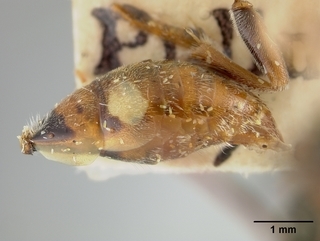
Smithsonian Institution, Entomology Department · 9
Nomada perplexans, male, abdomen |
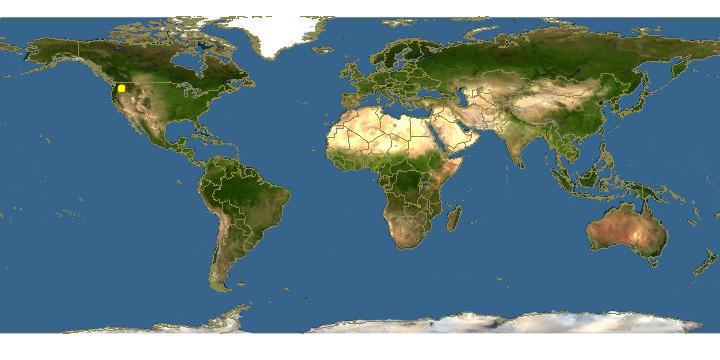
Click on map for details about points.
|
80x5 -
240x3 -
240x4 -
320x1 -
320x2 -
320x3 -
640x1 -
640x2
Set display option above.
Click on
images to enlarge. |
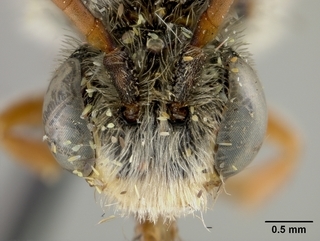
Smithsonian Institution, Entomology Department · 9
Nomada perplexans, male, face |
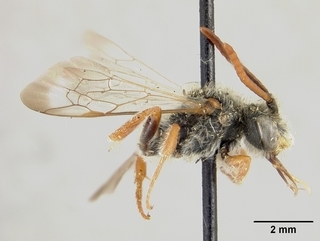
Smithsonian Institution, Entomology Department · 9
Nomada perplexans, male, side |
|
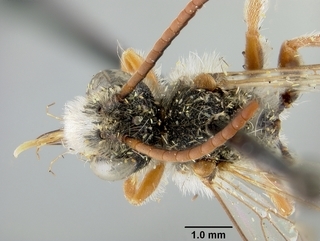
Smithsonian Institution, Entomology Department · 9
Nomada perplexans, male, top |
|
Overview |
Reprinted from: Cockerell,T.A. 1910. Some bees of the genus Nomada from Washington state. Psyche. 17:94-95
Length about 9 mm.; head and thorax black, with long coarse white
hair, which is slightly stained with yellowish above; lower corners of
face sending a linear process along orbits nearly to level of antennae,
clypeus except sides above, labrum and basal half of mandibles, all
light yellow; scape entirely black; flagellum red, the first five joints
black above, the others with a blackish band; third antennal joint a
little shorter than fourth; thorax densely and strongly punctured, wholly black except the reddish tubercles; tegulse very bright ferruginous;
wings strongly dusky at apex; stigma ferruginous, nervures
fusco-ferruginous; b. n. going far basad of t. m.; first r. n. joining
second s. m. well beyond middle; legs red, the anterior femora black
at base behind, the other femora with more black, the hind ones with
more black than red; abdomen clear red, first segment with basal half
and a pair of spots on apical half black; second segment with a pair
of very large pale yellow patches, pointed mesad; sixth with a pair of
obscure yellowish spots; apical plate notched; venter red with broad
suffused blackish bands. A western representative of 2V. perplexa
Cresson, easily distinguished by the much lighter red abdomen.
|
|
|
Names | |
|
|
| Supported by | |
Updated: 2024-04-19 08:23:27 gmt
|